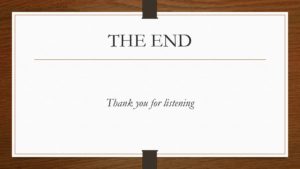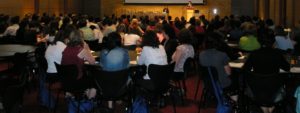
By Adrianne Harris, Broadly Speaking
I sometimes hear stories when people are looking for a job that they send off their resume and cover letter to over 60 or more vacancies, but don’t hear back from the various companies. There might be a number of reasons for this, maybe you didn’t tailor your resume (essential in the Australian labor market), or write a cover letter that matched your skills and experience to the job being applied for (a cover letter introduces your resume and invites me to read your longer resume). Perhaps the online tool that does the initial screening of the resume thought you didn’t include enough key words (applicant tracking systems are notoriously tricky to get past).
I then often take phone calls asking me to assess if someone would be suitable for an advertised position, as they believe they are a good fit, but just arent getting invited to the interview. I see the positive in all of my clients, and believe that they can translate their skills and experience to nearly any position. By combining employability skills, such as team work, communication, organisation and time management with the technical knowledge required I believe that everyone can demonstrate their fit in their written application documents. So my response is often “go for it”.
However. I’m not the one advertising the vacancy.
In my experience, the number one reason that you often don’t get to an interview can be explained when I ask the question “did you ring the contact person to find out a bit more information so you could tailor your application?” More often than not, the response is “no, I didn’t ring the company” or “I couldn’t find any contact details”.
Why do I ask if you’ve rung the contact person?
- They are doing the hiring and will be one of the people assessing your skills and knowledge and your suitability for the position
- They can tell you if they need someone highly experienced to hit the ground running, or are interested in developing the right person into the role
- They can tell you why the position is vacant, for example if it’s being advertised as part of a process and someone is already in the role, or if it’s a new position, or someone has moved on
- They will be able to tell you more information about what sort of person they are looking for and what is most important to them in terms of skills and knowledge
- They can give you the vibe of the organisation and you can start your assessment to determine if the role is a good fit for you
Once you have the information you can then tailor your documentation so that it matches the position being applied for, you can make it easy for the hiring team to see you are a fit for the job. You can highlight the relevant skills, experiences and achievements to make it easy to assess your suitability.It’s also the start of building rapport and commencing a business conversation with the potential new team or manager. If you have spoken to the contact person, your documents are often read a little closer by the team, as they have a relationship with you (as opposed to candidates who have not rung to introduce themselves) and often become more engaged when they recognise your name on the application. “Excellent, Jane sent in an application, we had a good chat on the phone and she could be a great fit”
An employer will notice that you have gone to the effort to tailor your documents to suit the position and the conversation you had. It’s also very noticeable to an employer if you are sending generic resumes to a lot of companies and not tailoring them. Sure, you can just fire off the resume and see how you go, you may be lucky enough to have applied when no one else tailored their documents or rang for more information, but in reality, that is not likely. Switched on candidates know the secret to creating an application that gets you to the next stage, is to get the inside information from the contact officer and match your documents and examples used to their expectations and requirements.
And if you decide after speaking to the contact officer not to apply, that is also a good outcome. Why waste hours of your time pulling together an application when you are not even close to the company’s expectations or what they are looking for?
What if there is no contact person listed?
Sometimes on job websites there are positions that seem to have no contact person or even list the name of the company. These are sometimes promoted with the opportunity to “click to apply now”. However before you fire off an untailored resume, based on a 600 word advertisement, ask yourself:
- How genuine is the vacancy, is it genuine or a recruiter trying to farm resumes and contact details to expand a database to boot their business opportunities?
- What organisation is happy to take random applications without offering support to potential applicants, or being available to answer questions about the organisation or opportunity?
- How can you tailor your application to the opportunity if you can’t get additional information on the name of the company, the role, the level the expectations?When applying for positions, a strategic approach to developing your documentation is critical, and the contact person is one of the people that can help you analyse your fit for the role and the essential information to include in your resume, cover letter and selection criteria documentation.C
ontact me to find out more about creating your personalised job search strategy.










